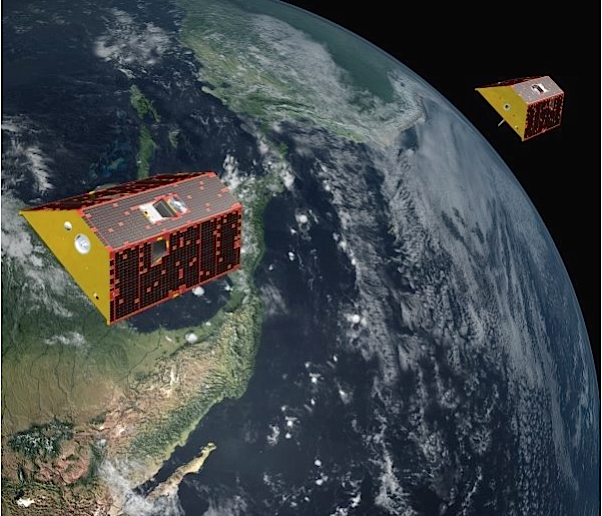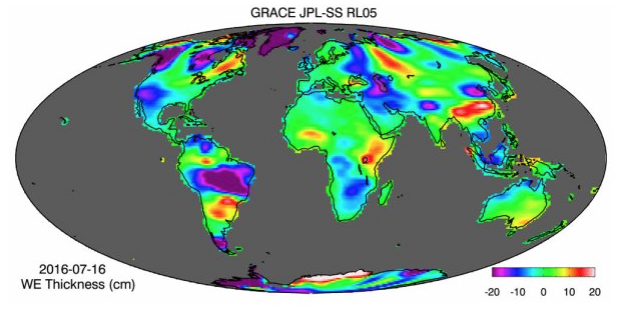
Illustration of GRACE-FO on orbit. Image: NASA/JPL-Caltech.

On the afternoon of May 22, a sudden light filled the sky and the SpaceX rocket carrying the NASA/German Research Centre for Geosciences Gravity Recovery and Climate Experiment Follow-On mission, or GRACE-FO, soared into orbit on a mission to continue the legacy of the original GRACE spacecraft duo.
Their goal: help to address global transformation by monitoring changes in the distribution of Earth’s mass, in particular in the form of water.
Fundamental to the measurement is a pair of JPL Microwave Ranging Instruments with transceiver assembly components built by SSL. With one on each of the two GRACE-FO satellites, they together measure micron level changes in the distance between the satellites caused by small variations in the gravitational field resulting from mass variations on Earth.
The original GRACE spacecraft duo launched in 2002 and worked to track and monitor these movements to understand the fluctuations in how water travels and is stored throughout the planet. Similar to the original GRACE mission, GRACE-FO relies on the Microwave Ranging Instrument with SSL-built components to accurately measure their separation as they circle Earth approximately 137 miles apart, but also will demonstrate an experimental Laser Ranging Interferometer that should cut down the noise and more accurately assess the separation changes between the two spacecraft.
By measuring variations in gravity over Earth’s surface and producing a new map of Earth’s gravity field every 30 days, GRACE-FO will bring clarity to how the planet’s mass distribution changes from month to month which is primarily due to water moving from one place on Earth to another. With these precise measurements of water migration, the mission provides a global perspective on transformations in groundwater storage and loss for use in water management, especially in the largest ground water reservoirs that are relied upon by much of the world’s population for reliable and predictable water resources. I commend NASA and NASA’s Jet Propulsion Laboratory for their commitment to maintaining data continuity from GRACE, enabling researchers around the world to continue providing valuable insights into the nature of our planet.

This image shows the land water storage anomalies in July 2017, as observed with the GRACE satellites. Blue colors indicate below-average terrestrial water amounts, while red colors show above-average water amounts. Image: NASA/JPL-Caltech.
SSL and the other Maxar Technologies businesses, DigitalGlobe, MDA and Radiant Solutions all have a commercial mindset that drives our success in contributing next-generation space solutions to enable global transformation. Our collaboration with NASA and JPL is closely aligned with Maxar Technologies’ and SSL’s purpose of building a better world and enables us to continually demonstrate our unparalleled capacity to provide commercial technologies that enable Earth science missions such as GRACE-FO.
The results of the original GRACE mission were revolutionary to Earth systems research. Now the gravity field data gathered by GRACE-FO will improve lives through better predictions of water availability and higher-quality information on how to use and manage our planet’s valuable resources. It is always an honor to partner with NASA and JPL to expand our knowledge of the universe and protect our planet.
This post is from Maxar Technologies' SSL's blog
By: Al Tadros, Vice President, Space Infrastructure and Civil Space
More about the GRACE-FO mission here.

